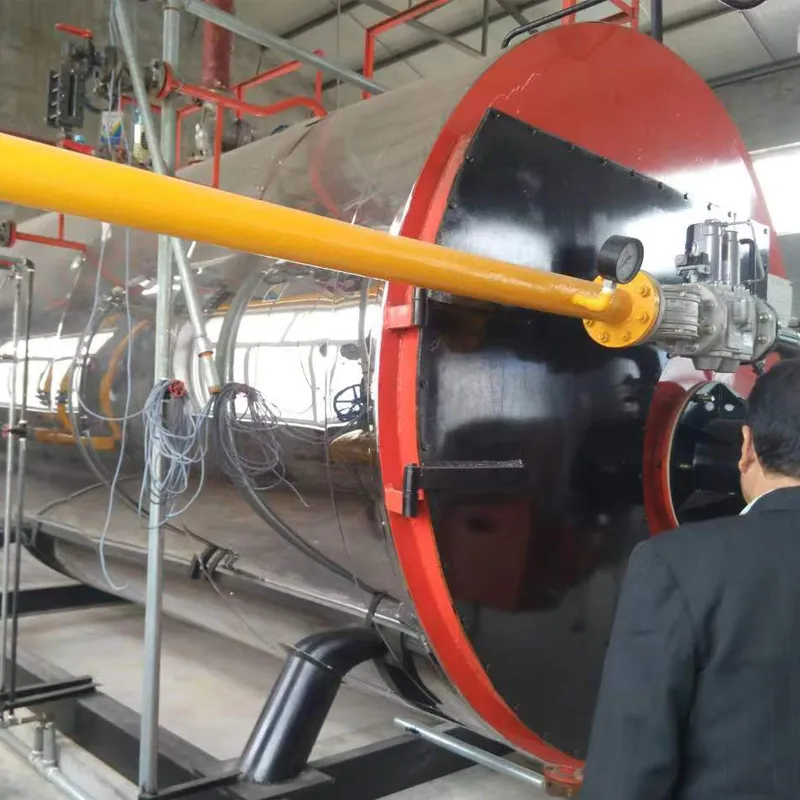
Nov . 21, 2024 15:07 Back to list
hot water boiler heating system diagram
Understanding Hot Water Boiler Heating Systems A Comprehensive Overview
Hot water boiler heating systems are widely recognized for their efficiency and effectiveness in providing warmth to residential and commercial spaces. This heating method, which relies on water heated by a boiler, offers a reliable solution for maintaining comfort during colder months. To comprehend how these systems operate, let’s delve into their components, functionality, and typical diagram representation.
Components of a Hot Water Boiler Heating System
1. Boiler At the heart of the system, the boiler heats water using various fuels such as natural gas, oil, or electricity. This heated water is then circulated throughout the building.
2. Pump A pump is crucial for moving the hot water from the boiler through the rest of the system, ensuring efficient distribution to all necessary areas.
3. Piping The system utilizes a network of pipes that transport hot water to radiators or underfloor heating systems, and return colder water back to the boiler for reheating.
4. Radiators or Heating Elements These are the end-point devices where heat is released into the living space. Radiators can be found in various designs, including wall-mounted units or decorative styles, designed to blend seamlessly with interior décor.
5. Expansion Tank As water heats up, it expands. The expansion tank accommodates this increase in volume, preventing pressure build-up that could damage the system.
6. Thermostat This device helps regulate the temperature throughout the space by controlling the boiler’s operation, ensuring optimal comfort and energy efficiency.
hot water boiler heating system diagram

7. Control System Modern systems often include sophisticated control mechanisms, allowing users to automate and customize their heating preferences.
How the System Operates
A hot water boiler heating system begins with the boiler, where water is heated to the desired temperature. The pump then circulates this hot water through the network of pipes. As water travels through the piping, it passes through radiators or other heating elements, where it transfers heat to the air in the room. The cooled water then flows back to the boiler through return pipes, where it is reheated and cycled back through the system.
This process is continuous, ensuring that spaces remain at a comfortable temperature. The thermostat monitors the ambient temperature and signals the boiler to activate or shut down as needed, promoting energy efficiency and cost savings.
Visual Representation
A visual diagram of a hot water boiler heating system typically illustrates the relationships and flow between various components. The boiler is positioned centrally, with arrows indicating the direction of water flow through the pump, piping, and radiators. It also highlights other components such as the expansion tank and the control system, providing a clear understanding of how the system functions cohesively.
Conclusion
Hot water boiler heating systems offer a practical and efficient heating solution for diverse environments. Understanding their components and operation enables homeowners and building managers to make informed decisions about their heating needs. With proper maintenance and management, these systems can provide years of reliable service, ensuring a warm and welcoming atmosphere during the chilly months. Whether you are considering the installation of a new system or looking to optimize an existing setup, grasping the fundamentals of hot water boiler heating is essential for achieving maximum comfort and efficiency.
-
Oil Fired Hot Water Boilers Sale - High Efficiency & Affordable
NewsJul.31,2025
-
High-Efficiency Commercial Oil Fired Steam Boiler for Industry
NewsJul.30,2025
-
High-Efficiency Biomass Fired Thermal Oil Boiler Solutions
NewsJul.30,2025
-
High Efficiency Gas Fired Thermal Oil Boiler for Industrial Heating
NewsJul.29,2025
-
High-Efficiency Gas Fired Hot Water Boiler for Sale – Reliable & Affordable
NewsJul.29,2025
-
High Efficiency Biomass Fired Hot Water Boiler for Industrial and Commercial Use
NewsJul.29,2025
Related PRODUCTS






















